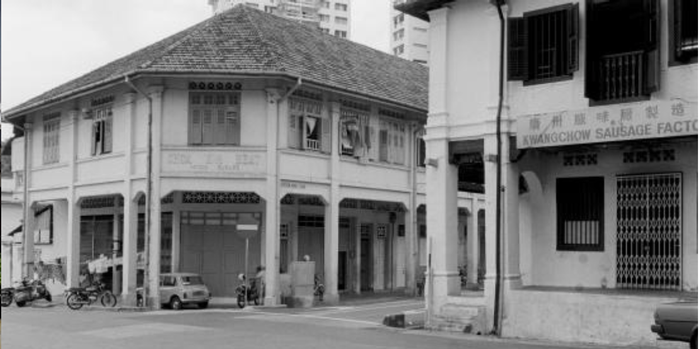Hadi Osni ProposalThe Baweanese Pondok: Pondok TampilungThe Bawenese is a significant community that had migrated to Singapore from Pulau Bawean. Upon arrival on the shores of Singapore, most of the Baweanese would settle down in ponthuk (literally: "lodging houses"). The ponthuk was more than just a simple communal home; it was a social institution within their community that played the crucial role of ensuring the welfare and integration of new migrants into the country. Following Independence in 1965, however, many of the shophouses that formerly housed these ponthuks were demolished for urban renewal. This includes the loss of narratives that detail the livelihood of the Baweanese community in historical districts such as Blair Plains as a contingent part of local history. Thus, this essay seeks to explore the undocumented narratives of Baweanese ponthuks and how they had individually contributed to the needs of the early migrants in unique ways. This will be done through a close study of three ponthuks: Ponthuk Sakauneng, Ponthuk Kelem and Ponthuk Tampilung. Ponthuk Sakauneng: UNCONVENTIONAL USE OF PHYSICAL SPACES Ponthuk Sakauneng like most ponthuks, was overcrowded. The entire shophouse was exclusively designated as private spaces for married couples, thereby forcing communal spaces that were typically on the first floor of the shophouse to be moved outside. The backlane of ponthuks were also cleverly utilised as communal spaces through the use of ambins (literally: "raised platforms"). Besides being used for socialising, they were also used as dining spaces. In the Islamic fasting month of Ramadhan, the ambins also hosted many bazaars. Ponthuk Kelem: UNCONVENTIONAL USE OF BACKLANE The dwellings of the Kelems in the Blair Plains district faces a backlane. During special occasions such as weddings, this backlane would be used to host guests. In line with the notion of semangat gotong-royong (literally: "togetherness"), residents from surrounding ponthuks will usually lend a helping hand by setting up tables and chairs, as well as to help prepare food for guests at the back of the shophouse. Ponthuk Tampilung: RELIGIOUS CENTRE FOR THE BAWEANESE COMMUNITY Ponthuk Tampilung played the major role as the religious centre for the Baweanese community in Blair Plains. As mosques were relatively distant from the district, they turned the rear court of the shophouse into a surau (a smaller mosque) catering to the general Baweanese community, carrying out most of the functions of a typical mosque including the five daily prayers and Quranic recitation classes for children in the district. Occasionally it held the Eid prayers, accommodating up to 300 congregants in commemoration of Islamic festivals. In conclusion, the early Baweanese migrants were a very close-knit community. What was interesting to note is the roles the ponthuks played in housing institutions and services that played key roles in meeting the needs of the community. The exclusion of the vibrant and spirited Baweanese community's narrative is truly unfortunate, as I believe this is a great example of how individual communities make careful use of their personal spaces to meet the social and cultural needs of the community at large.? Additional Help and InformationAre you in need of assistance? Please email info@berkeleyprize.org. |



